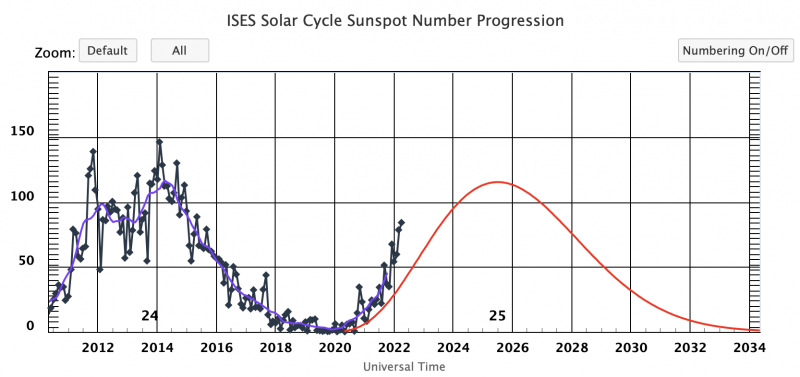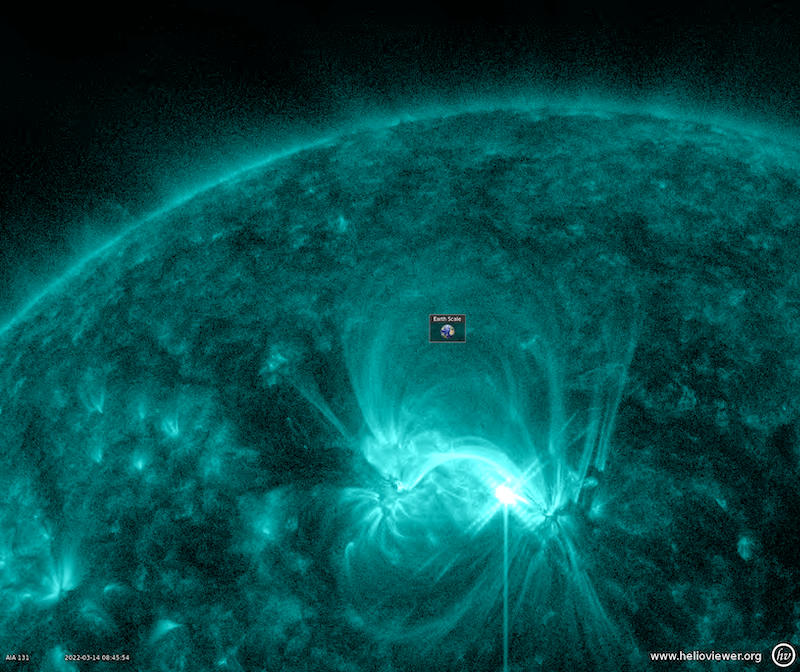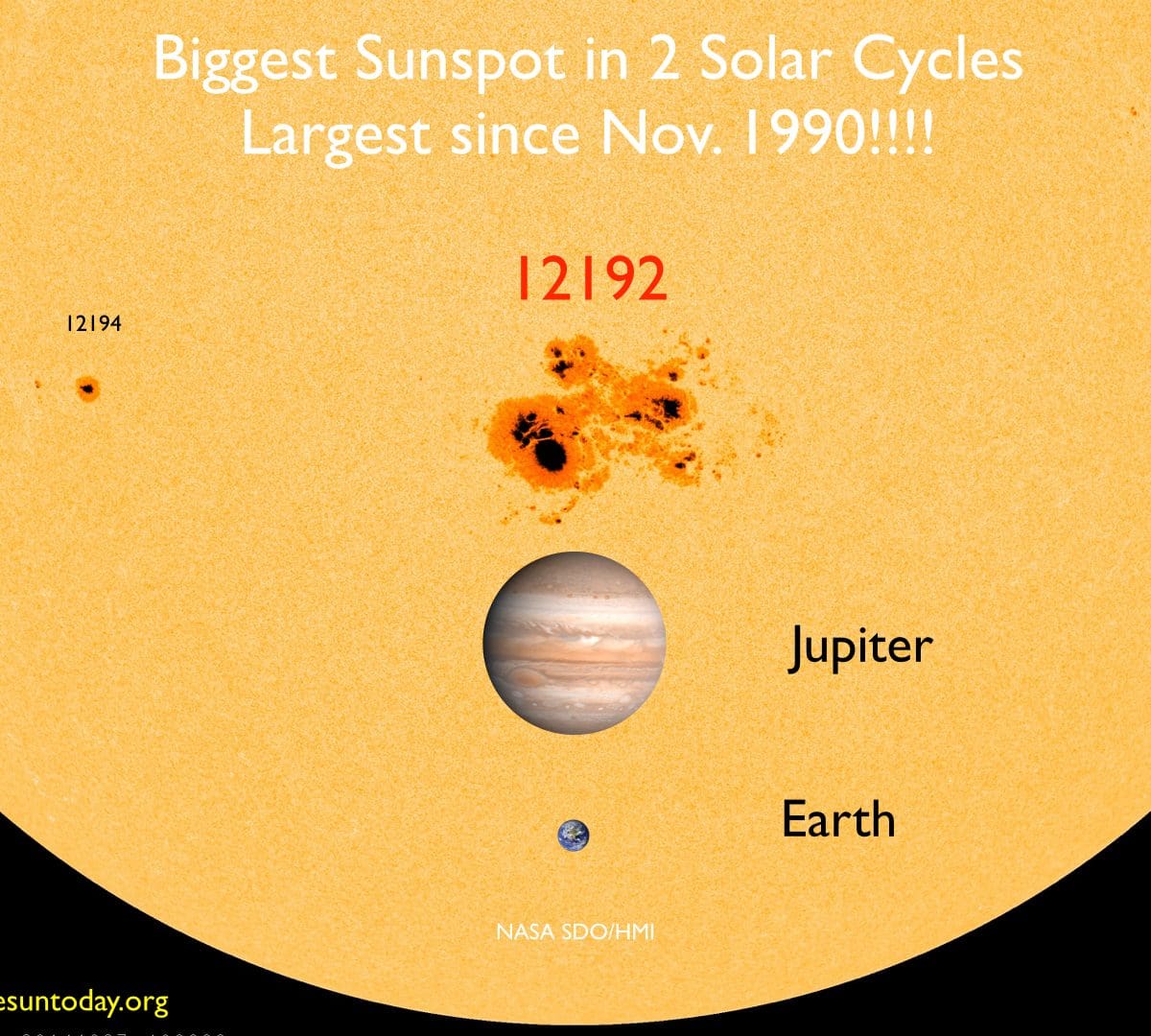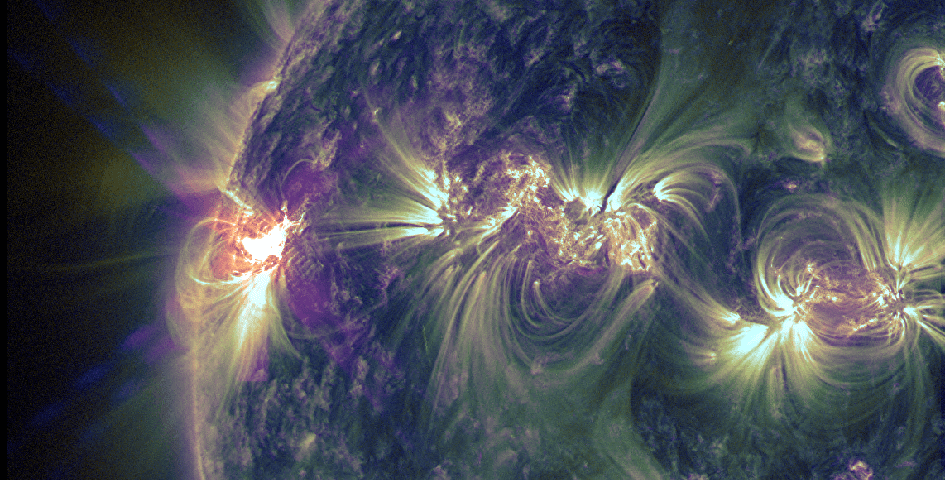
The active region that could, has again given us an X flare! That makes 4!
12:15 UT – The NASA GSFC Space Weather Research Center has estimated that the CME may give a glancing blow to Epoxi (~5/18/2013 06:00 UT) and hit Spitzer (~5/17/2013 00:30 UT plus minus 7 hours). There is also a small chance that the flank of the CME may hit the Earth around 5/19/2013. However, no major geomagnetic activity is expected.
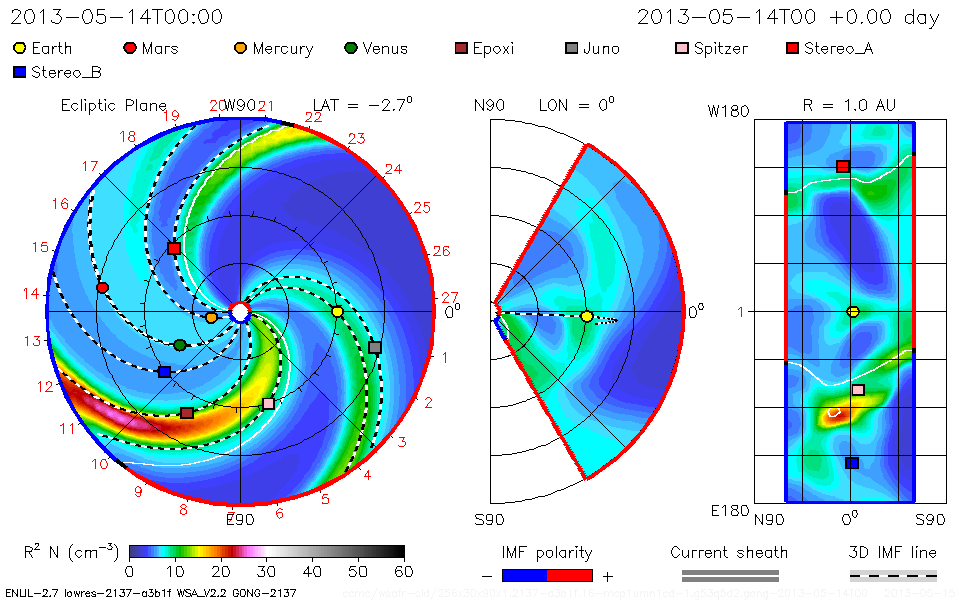
NASA Space Weather Research Center ENLIL CME Model for the May 15, 2013 event associated with the X1.2 solar flare.
3:19 UT – SOHO/LASCO C2 has captured the associated CME in it’s camera. Looks pretty fast.
2:52 UT – Here is a video of the eruption. There is an expansion of loops and a lift-off of material indicating that there is probably a fast CME.
http://youtu.be/gKTdoKCYbak
2:01 UT (10:01 pm EDT) May 15, 2013 – AR11748 has released an X1.2 solar flare, which peaked in the GOES X-ray monitor at 1:48 UT on May 15, 2013 or 9:48 EDT on May 14, 2013.

X1.2 Flare Intensity in the GOES X-ray Monitor. The flare peak is at 01:48 UT, May 15, 2013 or 9:48 UT May 14, 2013.

X1.2 Flare from AR11748 with the SDO/AIA 131 and 171. The flare peaked in X-ray at 1:48 UT on May 15, 2013 credit: NASA/SDO/jhelioviewer
AR11748’s other X flares
credit: NASA/SDO, helioviewer.org, NOAA/SWPC




